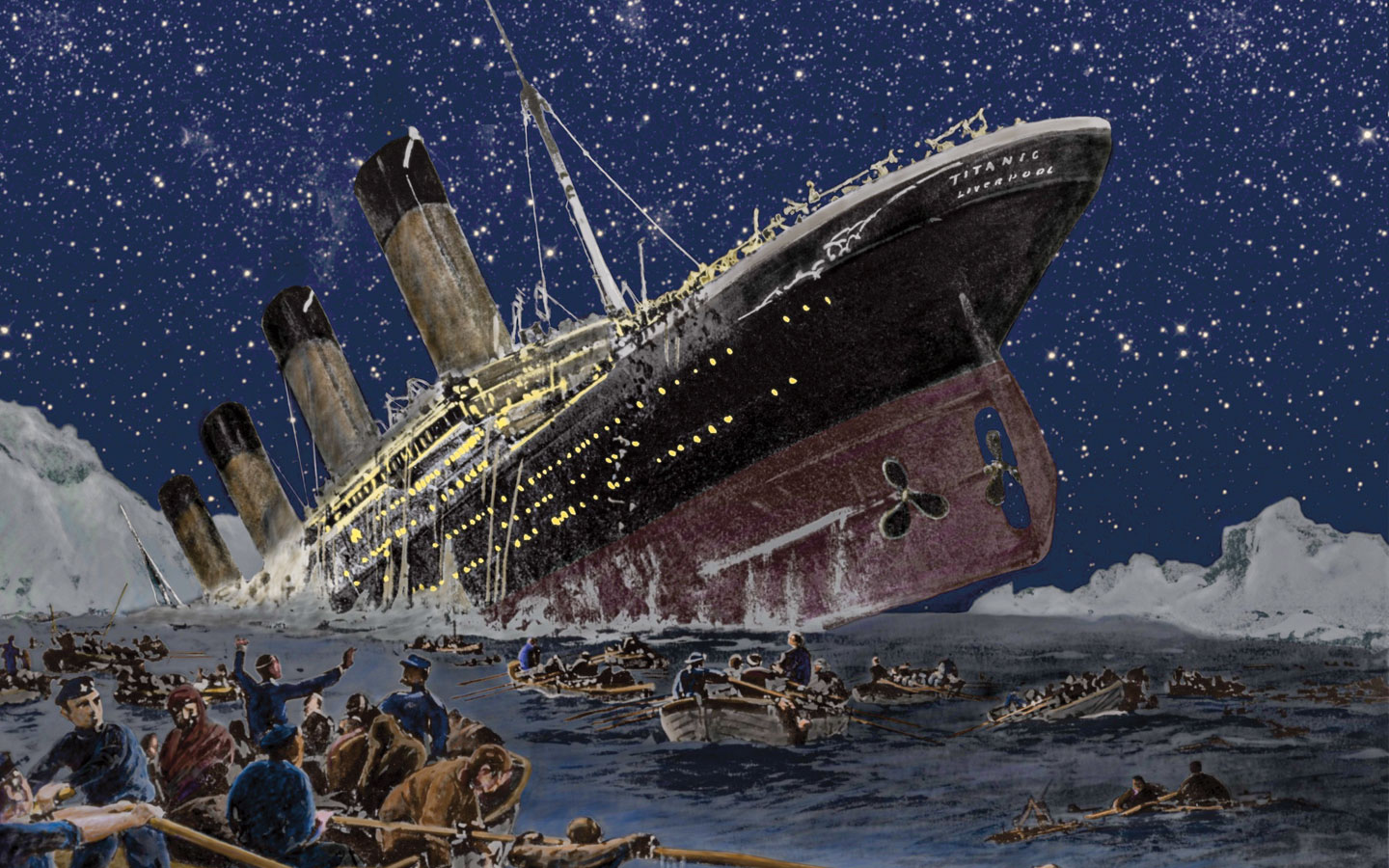Bettmann/Getty Images
The Titanic as it set sail
The Titanic sped across the Atlantic Ocean. The sky glittered with stars. The sea was as still as glass.
This was the Titanic’s first voyage, but already the ship was famous. It was big, beautiful, and built from the strongest steel. Many believed it to be “unsinkable.”
Until . . . disaster struck.
At 11:40 p.m., the Titanic hit a huge iceberg. The ship’s thick metal side tore open. Icy seawater flooded the ship. The Titanic was doomed. There weren’t enough lifeboats for everyone on board. More than 1,500 people died.
Less than three hours later, the Titanic disappeared into the black waters of the North Atlantic Ocean. Would it ever be seen again?
The Titanic sped across the Atlantic Ocean. The sky glittered with stars. The sea was as still as glass.
This was the Titanic’s first voyage. But the ship was already famous. It was big, beautiful, and built from strong steel. People said it was “unsinkable.”
Until . . . disaster struck.
At 11:40 p.m., the Titanic hit a huge iceberg. The ship’s thick metal side tore open. Cold seawater rushed in. The Titanic was doomed. There weren’t enough lifeboats for everyone. More than 1,500 people died.
Less than three hours later, the ship disappeared into the North Atlantic Ocean. Would it ever be seen again?
The Titanic sped across the Atlantic Ocean. The sky glittered with stars. The sea was as still as glass.
This was the Titanic’s first voyage, but already the ship was famous. It was big, beautiful, and built from the strongest steel. Many believed it to be “unsinkable.”
Until . . . disaster struck.
At 11:40 p.m., the Titanic hit a massive iceberg. The ship’s thick metal side tore open, and icy seawater rushed in. The Titanic was doomed. There weren’t enough lifeboats for everyone on board. More than 1,500 people died.
Less than three hours later, the Titanic disappeared into the black waters of the North Atlantic Ocean. Would it ever be seen again?

